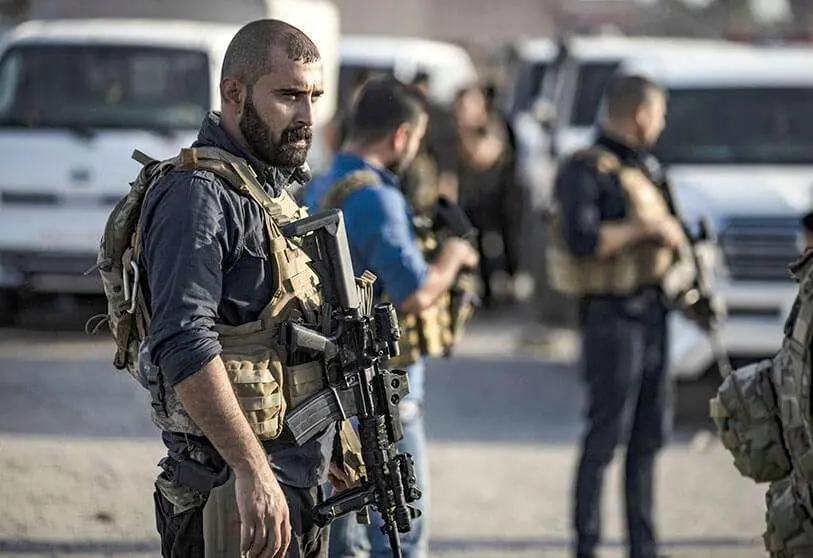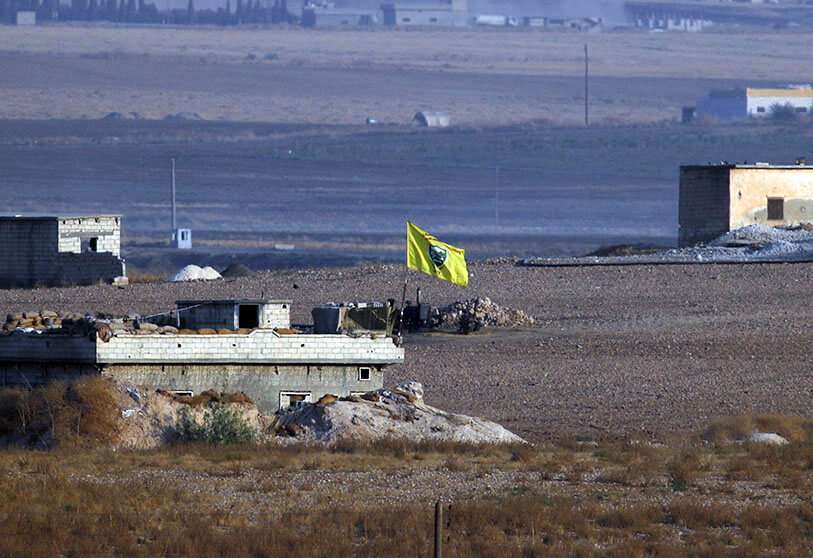Lessons learned: US tries to salvage relations with Syrian Kurds

The hasty retreat of the US troops from Afghanistan has left a sizeable dent in the reputation of the White House among the American public, in the Middle East and the world in general. Washington was criticised heavily for the betrayal of the Afghan government, which paved the way for Taliban to storm to power.
It’s only natural that such events created a breeding ground for uncertainty among US allies in the region. Some of them started to reevaluate their relationship with the White House after the Afghan fiasco; others were having doubts about the US’ commitment beforehand. Current situation forces Washington to take firm actions to validate their status as a powerhouse in the region. There are indicators that US leadership has found a way to regain trust from its allies starting with Kurdish armed units in Syria.
The Kurds became a key ally to the US in their quest to defeat ISIS in Syria. Washington helped to create the predominantly Kurdish Syrian Democratic Forces (SDF), who consequently established control over oil-rich regions in the north-eastern Syria. However the rapid rise of Kurdish influence triggered discontent from other parties of the Syrian conflict: the Assad government and Turkey, who considers SDF an offshoot of the PKK, designated as a terror group by the Turkish authorities. Under this pretext Ankara conducted three full-scale military operations against the Kurds in spite of its membership in the US led coalition.

Turkey remains a major headache for the US in northern Syria as it obstructs the development of a Kurdish autonomy. US failure to act during the Turkish offensive on Al-Bab and then Afrin is still considered one of the most agonizing experiences in the recent history of American-Kurdish partnership. On the flip side, this relationship had its bright moments. US forces were persistent in their cooperation with the Kurds despite Donald Trump’s efforts to withdraw US military presence from Syria. Furthermore, former Pentagon’s chief James Mattis increased funding of SDF in 2019 to a record high of $300 million.
Although the US cut back its support for the Kurds after proclaiming victory over ISIS, it’s still sufficient for SDF to stay among the most combat-capable forces in Syria. US provide machinery, equipment and ammunition, but most importantly teach the Kurds the skills to profit from their resources. Besides training SDF rank soldiers, the American troops prepare their special forces HAT (Hêzên Antî Teror, Anti-Terror Forces) primarily tasked with establishing security on oil facilities as well as detection and elimination of terrorists. In terms of their equipment they practically hold their own even against US troops. During their operations HAT fighters use standardized weaponry, night goggles and other modern resources.
Regardless of all the US aid military capabilities of SDF have one critical vulnerability, namely the lack of air defense. This weakness is successfully exploited by Turkey who uses their drones to bomb Kurdish positions. For the last couple of months the number of air strikes has significantly increased, which brought SDF to find new methods of deflecting air attacks.
There are good grounds to believe that Washington accommodated their partner’s troubles. Thus a source from an US air-base in Middle-East who asked to keep his name and position anonymous told us that on the 18th of September three combat-capable trainer aircraft T-6 Texan have been deployed to Tell Beydar air-base in Hasakah province, Syria. According to the source American instructors have begun a crash course in air pilotage with the candidates picked form the SDF ranks long before the airplanes arrived to their destination. This is implicitly confirmed by the large shipment of US weaponry, machinery and ammunition to Tell Beydar delivered on the 17th of September that included missiles compatible with Texan aircraft.

The sole presence of airplanes, even trainer aircraft, prompts a change in the already existing power balance. T-6 Texan can be used not only for air cover but also as a counter tool to Turkish “Bayraktar” UAVs especially if US grant Kurds access to intel from the radars situated on US air bases. Ultimately, from Turkey’s standpoint it must look like an attempt from the US military to create PKK’s own air force.
This being said the US are better off using political means rather than military if the goal is to handicap Turkish interests in Syria. The groundwork for this has been laid thanks to a reshuffle in the White House under Biden administration. First came the resignation of former US Special Representative for Syria Engagement James F. Jeffrey infamous for his soft spot for Turkey, who has been openly promoting pro-Turkish views in the White House during his tenure. In addition to the loss of their man in Washington, Turkey has gained a powerful adversary represented by the new National Security Council coordinator for the Middle-East and North Africa Brett McGurk. McGurk is a polar opposite to Jeffrey and has sided with the Kurds on numerous occasions. He is well respected among the leaders of SDF because of his work as Special Presidential Envoy for the Global Coalition to counter ISIS.
The only yet the most important question that is yet to be answered is the position of US president Joe Biden. So far Biden’s administration has been avoiding radical shifts regarding its Syria policy. Development of cooperation with the Kurds considering they have proven their reliability might come as a logical solution that will also allow the White House to show their teeth. Washington cannot endure another Afghanistan-like fiasco that will destroy their reputation figuratively and their allies literally. Even with all possible negative outcomes taken into account the enhancement of cooperation with the Kurds outweighs the drawbacks and remains the optimal route for the US








